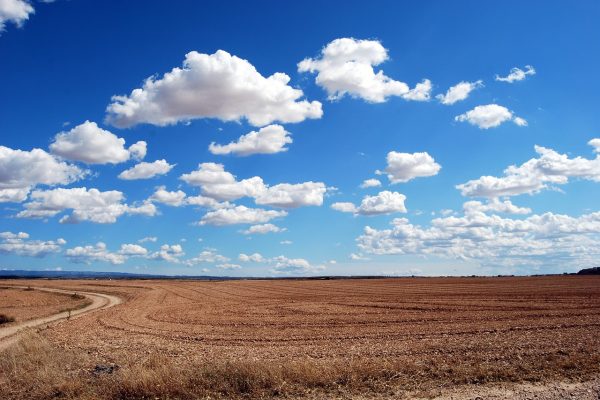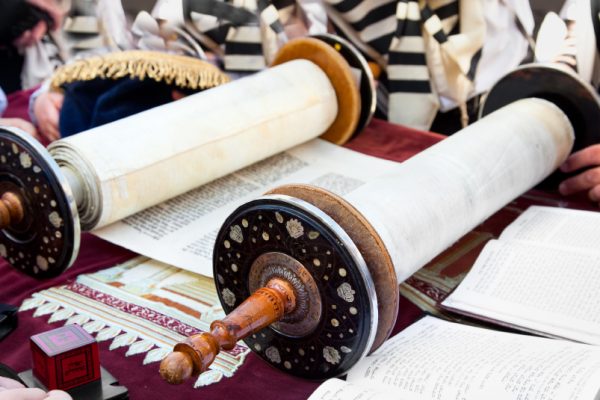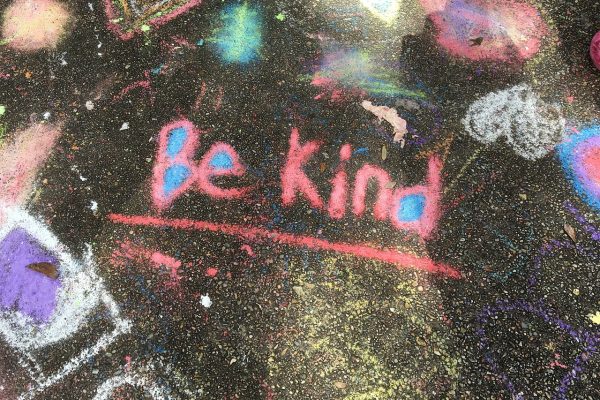I am a member of the Reconstructionist Chevra Kaddisha of Philadelphia. That is to say I belong to a liberal Jewish group that washes and ritually prepares bodies for Jewish burial. The reactions I receive when I share this information range from curiosity to awe to just plain disgust. I am also a child and grandchild of Survivors of the HolocaustThe genocide of millions of European Jews--as well as other ethnic, religious and minority groups--by the Nazis during World War II. The tragic events of the Holocaust are now commemorated each year on Yom HaShoah; established in 1952 by the Israeli government. Shoah (calamity) has become the term used to describe the systemic mass slaughter that occurred during World War II.. And it is from the intersection of these two parts of my identity that I will be speaking today.
What could possibly motivate one to take part in such a practice? While the general culture is busy anaesthetizing the death experience, creating as much distance as imaginable from the natural grit and grime that accompanies death, why do I rush to roll up my sleeves and engage, elbow-deep, in the unshakable smells and textures that accompany dead bodies? While most people cringe at the thought of death, why do I embrace the opportunity to place myself in such proximity to it—over and over again? Because for me, the work I perform as part of the chevra kaddisha is one answer to the rampant, overwhelming desecration of holiness that was the Holocaust.
As Maurice Lamm points out in his often-referenced book, The Jewish Way in Death and Mourning, “Man was created in the image of God and, although the pulse of life is no more, the human form must be respected for having once embodied the spirit of God, and for the character and the personality it housed” (p. 3). The entire highly ritualized process – from the moment a person dies, until the body is finally placed into the ground – reflects Judaism’s precept of the sanctity and sacredness of human life. During the final moments of life, we are enjoined to stay with the person as s/he makes the transition from this world to the next. The body of the deceased is then to be watched over and never left alone until after the burial. In houses of mourning, mirrors are covered to avoid dwelling on physical beauty and to show respect to the body that has already begun to decay.
According to traditional Jewish practice, the preparation of the body for burial falls to the members of the chevra kaddisha. We cleanse and purify the body of the deceased through a ritual called taharaLit. Purity Judaism has various laws and traditions related to purity. Some married women bathe in the mikveh following menstruation to return to a state of purity. A corpse is also purified with water before burial in a process called tahara.. Although she is also a friend and colleague of mine, whenever I receive a call from the head of our chevra kaddisha, I can sense why she is calling. I begin mentally clearing my calendar in anticipation of her question: “So and so died and we need to do a tahara. Are you free tonight?” Because the taharah is to take place as close to the time of the funeral service as possible, we generally gather late in the evening, when the streets are dark and empty. Our chevra kaddisha works in conjunction with two funeral homes in Philadelphia, both located in areas of moderate-to-heavy crime. No matter how tired we are, regardless of the weather, we leave the light and comfort of our homes and head out into the night. We usually arrive within minutes of each other, 4 to 6 women ready to perform this sacred duty, this mitzvahLit. Commandment. It is traditionally held that there are 613 mitzvot (plural) in Judaism, both postive commandments (mandating actions) and negative commandments (prohibiting actions). Mitzvah has also become colloquially assumed to mean the idea of a “good deed." for which there is no remuneration
With great care and respect, we begin the tahara process. Before entering the area where we will actually do the washing and dressing, we form a circle and recite a prayer in Hebrew and/or English which reminds us that we are commanded to act with lovingkindness and righteousness towards the dead. We pray for the courage and strength to perform our holy tasks properly and that our hands and hearts should be guided as we do this work. We conclude with, “Help us to see your face in the face of the deceased, even as we see you in the faces of those who share this task with us. Source of Life and death, be with us now and forever.” At the conclusion of this prayer, we wash our hands in silence, put on rubber gloves, and enter the area where the deceased body lies covered on a metal table.
Before we begin the preparations, we stand around the table and someone reads a prayer which begins with a plea for compassion for the deceased. We now begin our work. Silently, and simultaneously, we all take on different tasks: examining the tachrichim, the linen burial shrouds; preparing the aron, the coffin; laying out the kittelA white robe in which one is buried. Also worn at Passover, on Yom Kippur, and at one's wedding as a symbol of rebirth./jacket; setting out the supplies. Using pitchers, two women fill two buckets with warm water. Whenever it happens that I find myself preparing the water, I am struck by our use of warm water. We “know” of course, that it doesn’t matter to the deceased what temperature the water is, yet even in this, we show some form of respect for the person through projecting what we know as being comfortable.
We then reassemble around the table, and as the leader begins to uncover the body, more verses are recited. It is at this point in the tahara – when we see the face of the deceased for the first time – that I understand what it is we are praying for at the start of the tahara, “to see God’s face in the face of the deceased.” By now, I have participated in countless numbers of taharas, and have seen many, many dead bodies. And each of my personal encounters with these bodies has been in a safe, clean, respectful setting. But every single time that a face is uncovered and revealed, I am no longer standing in a funeral home in North Philadelphia. For a brief moment, all I see are those photos. You know the ones I mean. The piles of bodies, bones hideously heaped into mounds barely resembling anything we recognize as human. I fight the flood of tears as I picture the millions of Jews robbed of their lives and of their proper deaths.
As a child, I didn’t appear so different from my peers. Aside from having parents with foreign accents, and who, at times, were unfamiliar with American popular culture, for the most part my upbringing seemed relatively “normal.” But among Holocaust survivor families, mine is somewhat unusual. I am one of the few children of survivors who grew up with first cousins, an aunt and uncle, and most cherished, a grandmother. There was a semblance of the typical extended family, functioning within the rhythms of regular American life. In retrospect, however, I realize that I lived with an internal life that was at variance with the experiences of my peers. My friends did not attend synagogue and wonder why it was filled with Gentiles. Because according to my understanding of the world, to be Jewish meant having an accent. And as we all knew, most of the Jews were killed, so who were all these people in synagogue? And it wasn’t until adulthood that I realized that not everyone sets the PassoverPassover is a major Jewish holiday that commemorates the Jewish people's liberation from slavery and Exodus from Egypt. Its Hebrew name is Pesakh. Its name derives from the tenth plague, in which God "passed over" the homes of the Jewish firstborn, slaying only the Egyptian firstborn. Passover is celebrated for a week, and many diaspora Jews celebrate for eight days. The holiday begins at home at a seder meal and ritual the first (and sometimes second) night. Jews tell the story of the Exodus using a text called the haggadah, and eat specific food (matzah, maror, haroset, etc). table with a box of tissues as a centerpiece; there were people who actually got through the sederLit. Order. The festive meal conducted on Passover night, in a specific order with specific rituals to symbolize aspects of the Exodus from Egypt. It is conducted following the haggadah, a book for this purpose. Additionally, there an ancient tradition to have a seder on Rosh Hashanah, which has been practiced in particular by Sephardi communities. This seder involves the blessing and eating of simanim, or symbolic foods. The mystics of Sefat also created a seder for Tu B'shvat, the new year of the trees. without crying!
In contrast to most of my friends who lost relatives throughout their childhood, it wasn’t until I was 21 years old that I attended my first funeral. And though I had visited Jewish cemeteries the world over, this was the first time I had ever been to a cemetery where I actually knew someone who would be buried there. There had never before been any family graves for me to visit. As in the case of most Holocaust survivor families, there is no trace of the bodies of my family members who were killed in the Shoah.
My husband, on the other hand, grew up with all-too-frequent visits to the cemetery. He attended funerals for the untimely deaths of first cousins, uncles, and 3 grandparents by the time he was 25 years old. He often describes his childhood as having been spent in silence-“continuously setting up the chairs for shivaSeven-day mourning period following the funeral of a first-degree relative, during which time family members remain at home and receive visits of comfort. Other customs include abstinence from bathing and sex, covering mirrors, sitting lower than other visitors, and the lighting of a special memorial candle which burns for seven days. and putting away the chairs after shiva.” It has been his personal practice to take each of our 3 children respectively, on their first birthdays, to the cemetery to “meet” his family. And when I see the comfort he derives from going to the cemetery before holidays, or just when he feels the urge for a visit, I must confess, I feel a tinge of “grave-envy.” There his family rests in peace. How can there be any peace for those millions of souls lost in the Shoah? What is my response to the unbearable destruction of bodies, souls, family meals, classrooms, lullabies, dance performances, poetry books, life itself? One of my responses is to raise a family steeped in Jewish values, culture, and education. Another response is to participate in tahara, and help provide the dignity in death that should be every person’s due.
I return to the task at hand, and re-focus, filled with gratitude that I can be a part of tenderly and respectfully preparing this individual Jewish body for a proper Jewish burial. As we prepare for the tahara, I am filled with awe at the sanctity of each and every life. And I wonder what differentiates this lifeless face from the faces around me? I take note of my breath and recognize it as Life itself. And though the Breath of Life no longer dwells in the body before us, just a few hours ago it contained the Life or Spirit or Breath or whatever that intangible energy is whose presence equals “alive” and whose absence we recognize as “dead.”
As we carefully examine the entire body, great care is taken to keep as much of the body draped as possible, trying to expose only sections at a time for examination and cleaning. I am continually touched by the concern and respect we pay to the deceased, and once again, the obvious contrasts from my frame of reference are brought to the forefront of my consciousness. This death is personal; every death is personal. This person will not be a mistreated, unidentifiable, anonymous body. This woman’s body will be respected; this body will be treated as a vessel that once housed precious Life and is therefore to be honored.
As we replace the sheet, we begin to pour two pitchers of water from head to toes and recite verses from the Biblical book of love poems, Shir ha-Shirim/Song of Songs that end with these lines:
How fine you are, my love,
My perfect one.
I am rarely able to hold back my tears at the recitation of these verses. Certainly, this person is not beautiful, as we understand and use the term in our everyday lives. Yet by reciting these verses, we affirm the value, beauty and dignity in each human being. Proclaiming the beauty of every single soul is one of the most strikingly profound responses to the Shoah that I can imagine.
Facing away from the body and averting our eyes, we hold a fresh sheet and create a canopy over the body. The wet sheets are removed, and the dry one is lowered over the body. Before we begin continuous pouring of 24 quarts of water over the body, we read verses from the TorahThe Five Books of Moses, and the foundation of all of Jewish life and lore. The Torah is considered the heart and soul of the Jewish people, and study of the Torah is a high mitzvah. The Torah itself a scroll that is hand lettered on parchment, elaborately dressed and decorated, and stored in a decorative ark. It is chanted aloud on Mondays, Thursdays, and Shabbat, according to a yearly cycle. Sometimes "Torah" is used as a colloquial term for Jewish learning and narrative in general.: “I will pour water over you, and you shall be cleansed of all your impurities. I will purify you from your waywardness….Living water, you are a fountain, a well, a river flowing from the mountains.” While we take turns pouring the water we make sure that the flow is continuous. We each recite the words, “tehora hi” (“she is pure”) three times.
The body is then dried and dressed in the prescribed manner, and placed in the aron. While everyone stands around the aron, we recite the following: “God shall always guide you and satisfy your thirsty soul in a time of drought and strengthen your bones. And you shall be like a well-watered garden, like a water spring whose waters never fail.” The sense of peacefulness at this point is palpable. Just before closing the aron we take a moment, catch our collective breath, and each in her time, ask the deceased to forgive us for any shame, embarrassment, pain, or humiliation we may have caused-accidental or otherwise-during the performance of the taharah. We then close the lid of the aron, and recite the Priestly Benediction. Each part of this ritual is imbued with meaning, as if to counteract the meaninglessness representative of the Shoah, and to compensate in some small measure for the repulsive disregard for human life.
Before leaving the room, we remove our gloves, wash our hands in silence and then form a final circle outside of the tahara area. There we recite the final prayer of the evening: “O House of IsraelLit. ''the one who struggles with God.'' Israel means many things. It is first used with reference to Jacob, whose name is changed to Israel (Genesis 32:29), the one who struggles with God. Jacob's children, the Jewish people, become B'nai Israel, the children of Israel. The name also refers to the land of Israel and the State of Israel., come, let us walk in God’s light. The Rock of Israel has spoken and called the world into being, from the east where the sun rises to the place where it sets. Peace shall come, and each of us shall rest in our appointed place. For dust we are and to dust we shall return. God has given and God has taken away. Blessed be God’s name.”
Tahara is a commandment one performs l’shem mitzvah – for the sake of the mitzvah – with no expectation or even possibility of a “thank-you.” It is the ultimate sanctification of Life. Caring for a body from which the Life Source has departed forces us to confront our own mortality and the existential questions of life and death. And though only a small percentage of us volunteer for such work, the profound rewards are almost unanimously experienced by participants in chevrei kaddisha.
There have been many occasions when we who are performing a tahara have a collective, shared awareness of some tangible shift of energy in the room. We discover afterwards, when we are returning to our cars and winding down, that others in the room had noticed this at the exact same time that we felt it. This has been described by various members as “feeling as if the neshama, the soul left the body” or “the neshama was hovering and finally was released.” To experience this together binds us in ways that defy description. Together, the women of the chevra kaddisha indeed form not only a “Holy Society” but a “Society of Shared Secrets.” And I realize the blessing of seeing God in the faces of those with whom I share this task.
When I return home after a tahara, I go through my private rituals that I’ve constructed over the years. After being in such close connection to the spiritual edge of being, with some measure of relief I cleave to the physical. I make sure to shower, change clothes, and then engage in eating or some other basic activity that grounds me on “this side.” Does being a child of survivors make me more sensitive, more aware, more in awe of life and death than others who choose to do this work? It’s hard to say. What I do know is that my very life is a miracle, and by all odds, I shouldn’t be here. But I am here, and overcome by gratitude, I proclaim my personal prayer, “Blessed are You, Source of Life, who is made holy through living.”
Presented at the World Council of Jewish Communal Service Quadrennial Conference, November 12-16, 2003, JerusalemLit. City of peace From the time of David to the Roman destruction, Jerusalem was the capital of Israel and the spiritual and governmental center of the Jewish people. During the long exile, Jews longed to return to Jerusalem and wrote poems, prayers, and songs about the beloved city. In 1967, with the capture of the Old City, Jerusalem was reunited, becoming "the eternal capital of Israel." Still, the longing for peace is unfulfilled., Israel; used with permission of the author.












